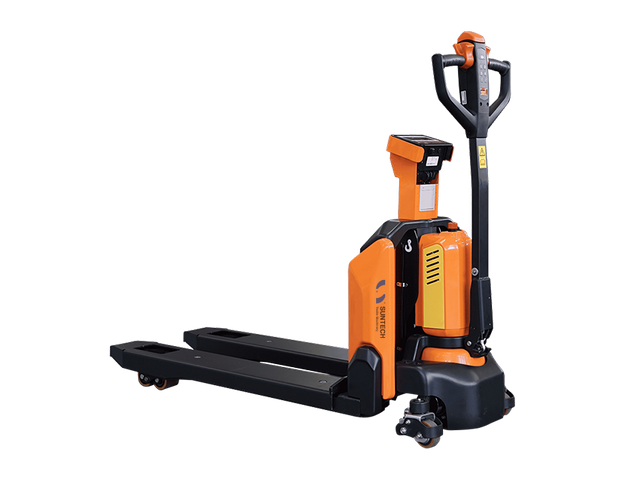In the ever-evolving world of logistics and warehousing, efficiency and innovation are paramount. One of the most transformative advancements in recent years has been the advent of electric stackers. These powerful tools are not just enhancing productivity but are also reshaping the landscape of material handling. This article delves into how electric stackers are revolutionizing material handling, offering a fresh perspective on their impact and advantages.

Enhanced Efficiency and Productivity
Electric stackers have significantly boosted efficiency in warehouses and distribution centers. Unlike their manual counterparts, electric stackers are powered by batteries, allowing for quicker and more effortless lifting and transporting of goods. This mechanization reduces the physical strain on workers, enabling them to handle more tasks within a shorter timeframe. For instance, an electric stacker can lift heavy pallets to considerable heights with minimal effort, streamlining the stacking process and optimizing space utilization.
Improved Safety Standards
Safety is a critical concern in material handling, and electric stackers have made substantial strides in this area. Traditional manual stackers often pose risks due to the physical exertion required, leading to potential injuries. Electric stackers, however, come equipped with advanced safety features such as automatic braking systems, overload protection, and ergonomic controls. These features not only protect the operators but also ensure the safe handling of goods, minimizing the risk of accidents and damage.
Environmental Benefits
In an era where sustainability is a global priority, electric stackers offer a greener alternative to traditional fuel-powered equipment. They produce zero emissions, contributing to a cleaner and healthier work environment. Additionally, the use of rechargeable batteries reduces the dependency on fossil fuels, aligning with the broader goals of reducing carbon footprints and promoting eco-friendly practices. For example, many warehouses are now opting for electric stackers to comply with environmental regulations and to support their corporate social responsibility initiatives.
Cost-Effectiveness and Long-Term Savings
While the initial investment in electric stackers may be higher compared to manual or fuel-powered options, the long-term savings are substantial. Electric stackers have lower operating costs due to reduced fuel consumption and maintenance requirements. The longevity of electric stackers, coupled with their efficiency, translates to a higher return on investment. For instance, businesses that have transitioned to electric stackers report significant savings in operational costs and enhanced productivity, making them a financially sound choice.
Versatility and Adaptability
Electric stackers are incredibly versatile, catering to a wide range of material handling needs. They come in various models and configurations, suitable for different types of loads and warehouse layouts. Whether it's narrow aisles, high shelves, or heavy pallets, there is an electric stacker designed to meet the specific requirements. This adaptability makes them an invaluable asset in diverse industries, from retail and manufacturing to logistics and distribution.
In conclusion, the rise of electric stackers is a testament to the ongoing innovation in material handling. By enhancing efficiency, improving safety, offering environmental benefits, and providing cost-effective solutions, electric stackers are indeed revolutionizing the way goods are managed and transported. As businesses continue to seek ways to optimize their operations, the adoption of electric stackers is set to become even more widespread, heralding a new era of productivity and sustainability in material handling.








